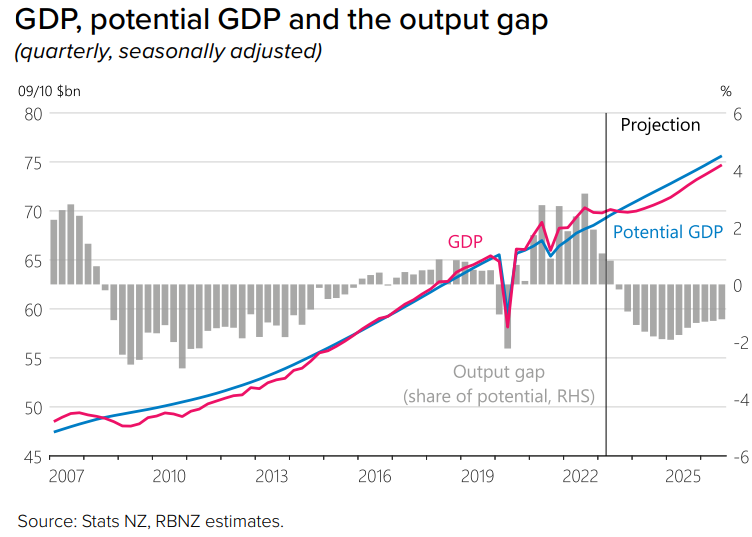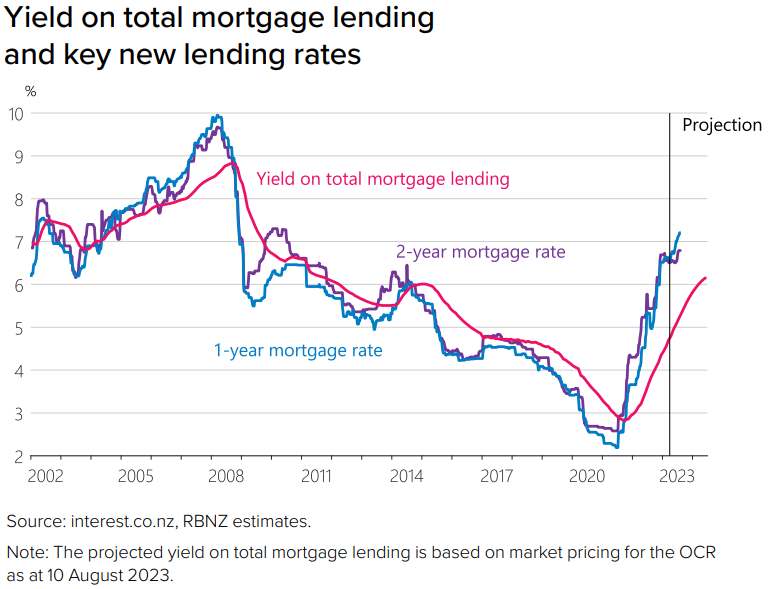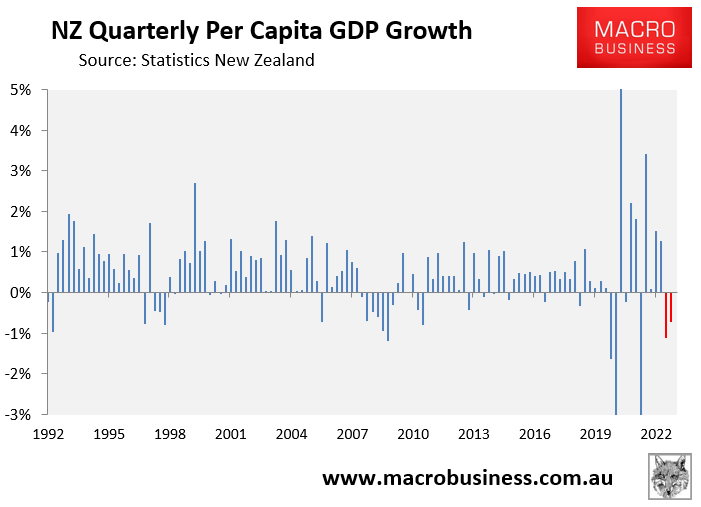According to New Zealand’s most recent national accounts, the country entered a “technical recession” in the March quarter, defined as two consecutive quarters of negative aggregate Gross Domestic Product (GDP) growth.
This came after the economy recorded a 0.7% drop in GDP in the December quarter of 2022, followed by another 0.1% decline in the March quarter.
The Reserve Bank’s Statement of Monetary Policy, released on Wednesday, projects “the economy to contract over the second half of 2023, as temporary supportive factors from the June 2023 quarter unwind, global growth slows, and high interest rates keep domestic demand subdued”.

“Higher interest rates, lower house prices and the higher cost of living have contributed to lower overall domestic demand across recent quarters”.
“Higher mortgage rates have increased debt-servicing costs for households, reducing the amount of household income available for other spending”.
“The lagged impact of recent increases in mortgage rates has yet to impact household cash flow fully”.
“This reflects that the yield on total mortgage lending is expected to increase by 1 percentage point over the coming 12 months as borrowers roll onto higher interest rates”:

“Lower house prices also tend to lead to reduced spending by households as they feel less wealthy and have less borrowing power, contributing to lower discretionary spending on durable goods such as household appliances over recent quarters”.
The Reserve Bank also notes that immigration into New Zealand has rocketed since 2022, driven by work visas, tourists and students:

“New Zealand is on track to experience its largest annual net immigration of the last century”.
“This would be equivalent to around 1.9 percent of the projected working-age population, the highest proportion recorded since the start of the Household Labour Force Survey in 1986”:

Following this strong population growth, New Zealand’s real per capita GDP plunged by 1.1% in the December quarter and a further 0.7% over the March quarter (see red bars below):

New Zealand’s per capita real gross national disposable income (NDI) also plummeted by 2.2% and 0.9% respectively over the December and March quarters:

While the Reserve Bank will only deliver a mild technical recession, it will be brutal when adjusted for population growth.
New Zealanders are facing a long, multi-year decline in per capita GDP and living standards.

